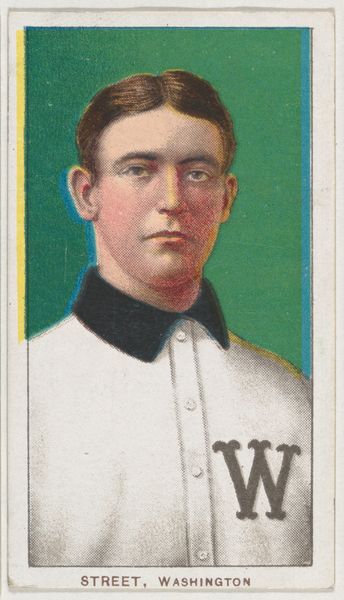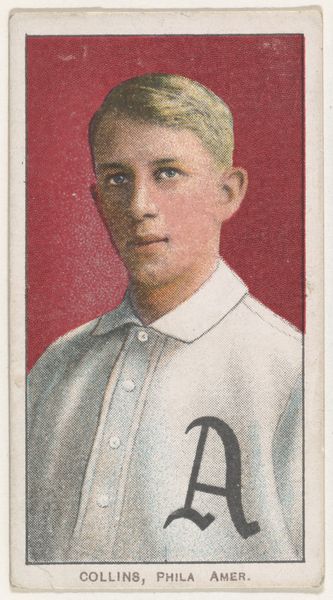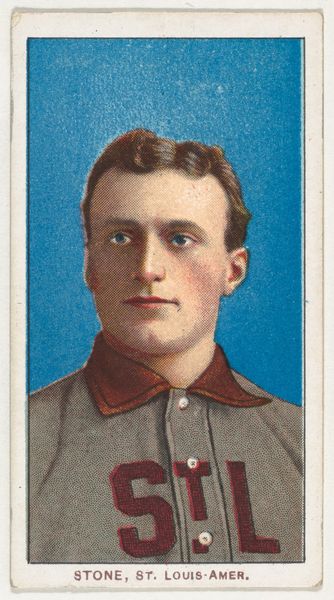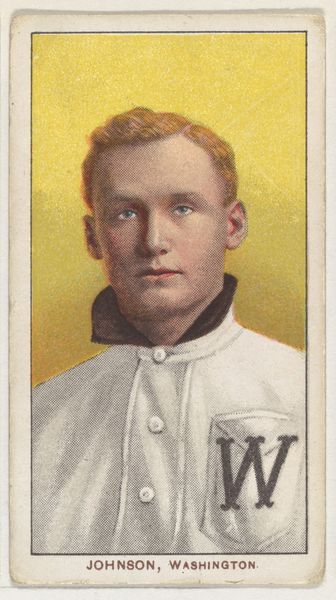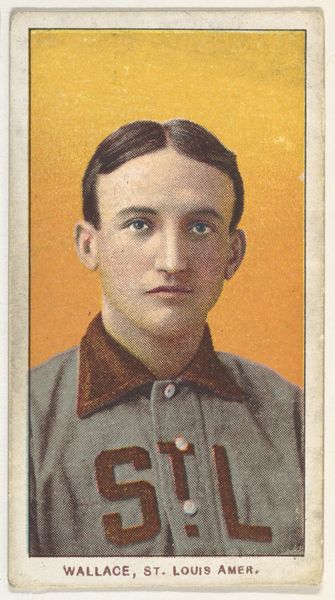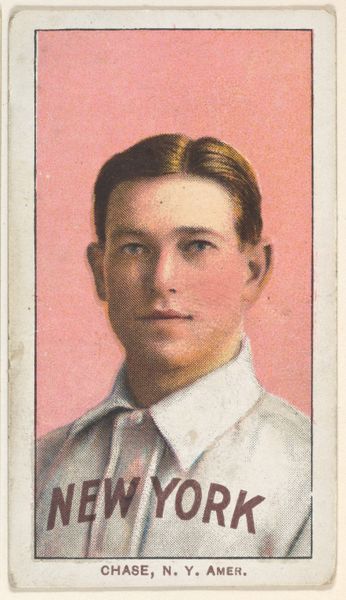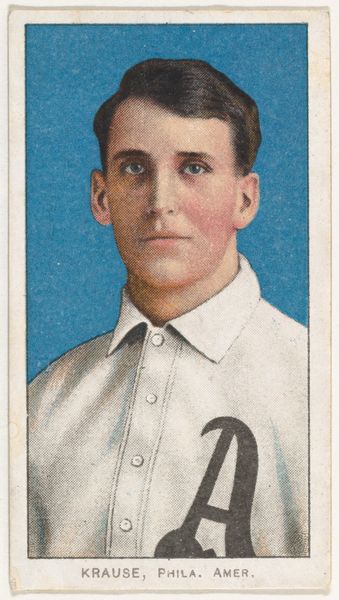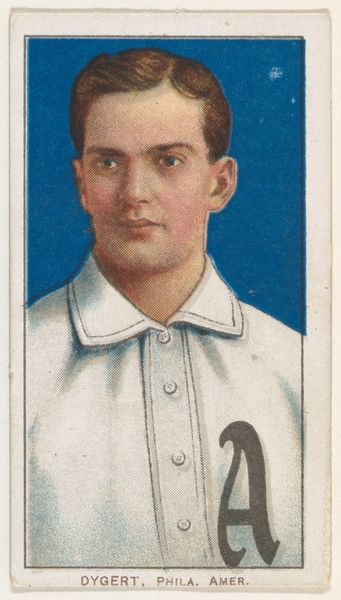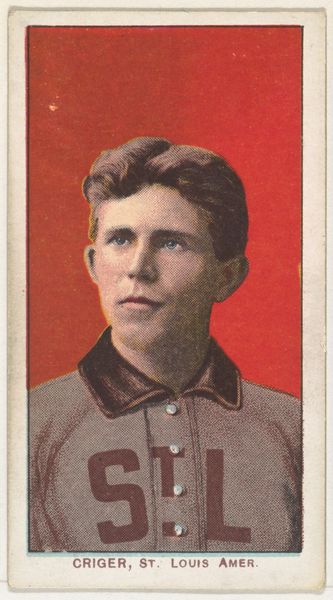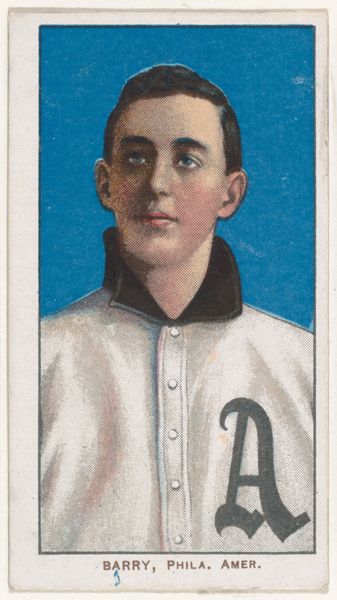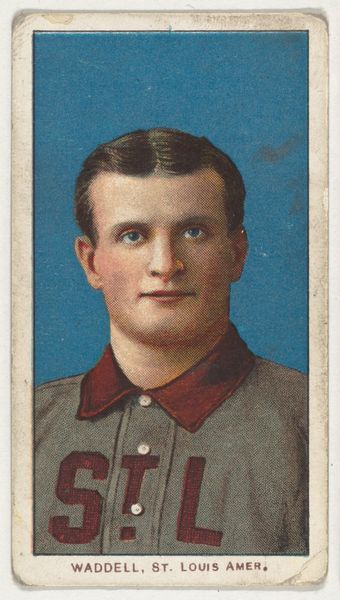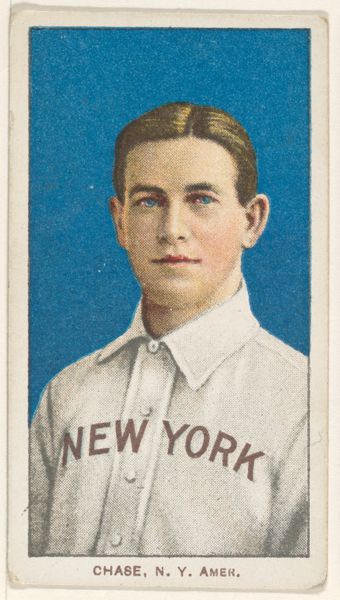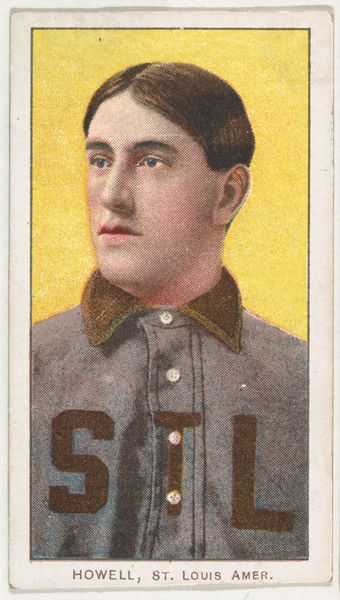
Beaumont, Boston, National League, from the White Border series (T206) for the American Tobacco Company 1909 - 1911
0:00
0:00
Dimensions: Sheet: 2 5/8 x 1 7/16 in. (6.7 x 3.7 cm)
Copyright: Public Domain
Editor: So, here we have a lithograph print titled "Beaumont, Boston, National League" by the American Tobacco Company, dating between 1909 and 1911. It’s a baseball card, essentially. The bright red backdrop is striking and the portrait has an almost Impressionistic feel to it. How do you see this piece fitting into the art world of its time? Curator: Well, let's consider the context. These cards weren't meant for museums, were they? The American Tobacco Company produced them as promotional items. Thinking about the public role of art, these cards democratized image consumption. Editor: Democratized? How so? Curator: Mass production made them accessible to a broad public. Baseball, rapidly growing in popularity, became intrinsically linked with commercial imagery and, thus, the construction of celebrity. Consider the politics of imagery at play: the American Tobacco Company projecting an image of wholesomeness and Americana while simultaneously dominating a market using, arguably, ethically dubious labor practices. Editor: So, it’s not just about baseball or portraiture. It's also about commerce and social messaging. Does the "White Border" series have any particular significance in the history of card collecting or popular culture? Curator: Absolutely. The white border, while seemingly simple, served a key practical function - reducing wear and tear, thereby preserving the image longer. That reflects a shift toward collecting as a conscious activity. It highlights how a small design choice can influence an object's reception and value over time. It's an early example of planned obsolescence working in reverse. Editor: That's fascinating. I hadn't considered the preservation aspect and the company's broader marketing strategies. Curator: Right. This card reflects a moment where sport, commerce, and visual culture intersected to create a new form of public art. Editor: This changes how I see baseball cards! It’s really interesting to consider the larger socio-political implications tied to such an everyday object. Curator: Precisely. And that’s how we uncover deeper meaning in art and culture.
Comments
No comments
Be the first to comment and join the conversation on the ultimate creative platform.
